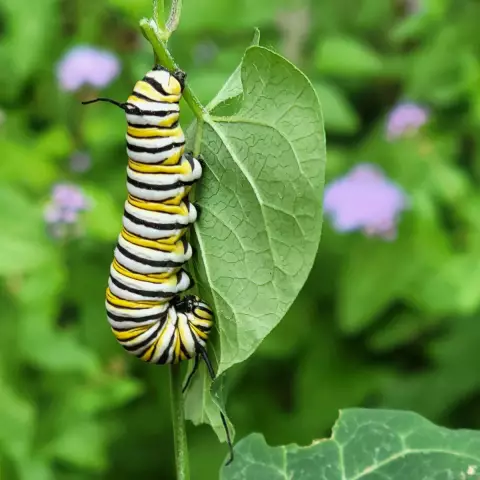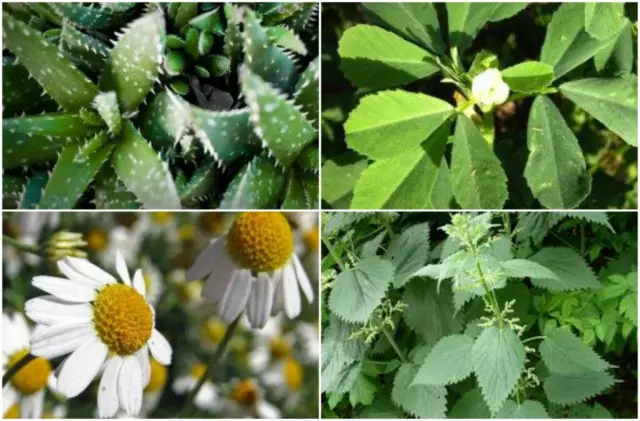- Author Rachel Wainwright [email protected].
- Public 2023-12-15 07:39.
- Last modified 2025-11-02 20:14.
Poisonous plants in the room, in the country and in the forest
It is impossible to imagine human life in which there would be no plants. There are indoor flowers in almost every apartment, in every production room, millions of people enjoy gardening and gardening, spend their free time in their summer cottages. However, we very rarely pay attention to those properties of our green pets that can make the neighborhood with them unpleasant and even unsafe.

Source: depositphotos.com
The most dangerous cultivated plants
It has been known for centuries that a number of plants contain substances harmful to health. Poisons of vegetable origin cause severe poisoning, damage to the skin and mucous membranes, depression of respiratory function, etc. Such substances are especially dangerous for children and people with chronic diseases. Of the flowers and shrubs found in our gardens or apartments, the most serious threats are plants:
- family of nightshades. These are all kinds of decorative peppers, pseudo-pepper nightshade, brunfelsia, brovallia, brugmansia, solandra, etc. Bright, attractive fruits give them a particularly spectacular look. But you can't eat beautiful berries. They, like the leaves of such plants, contain the alkaloid solanine, which causes serious damage to the nervous system in humans. The nightshade family includes common dope and henbane (belladonna), which have a similar effect;
- the buttercup family. Many people know that the wild buttercup, also known as night blindness, is poisonous. But not all gardeners are aware that his close relatives growing in their summer cottages are also dangerous to health. These are very popular, beautifully blooming delphinium (larkspur), aconite (fighter), ranunculus (garden buttercup), lumbago, aquilegia, anemone, etc. All parts of buttercup are poisonous. A leaflet accidentally ingested can provoke a headache, choking, and even seizures. The scent of the aromatic delphinium species causes symptoms similar to those of severe intoxication. Aconite in medieval Europe was considered so poisonous that a person who was found to have the rhizome of this plant, in some countries, was subject to execution without trial as a potential poisoner. In consolation to modern flower growers, it is worth notingthat cultivated varieties of aconite (especially those zoned for zones with a cool climate) are much safer than their wild-growing ancestors;
- of the kutrov family, to which the oleander, rauwolfia, catharanthus, pachypodium, adenium (desert rose), pink periwinkle belong. The substances contained in these plants inhibit cardiac activity;
- euphorbia family. These common indoor plants (various types of euphorbia, croton, akalifa, poinsettia) secrete milky juice that can cause skin lesions - from minor irritation to real burns;
- the aroid family (monstera, dieffenbachia, philodendron, calla). They are also dangerous because of the sap that flows out in places where the stem and leaves are damaged. Accidental contact of this liquid with the mucous membrane of the mouth or throat leads to severe swelling, and if it gets into the eyes, conjunctivitis occurs;
- the amaryllis family, widely represented by garden and indoor species. These include clivia, hippeastrum, zephyranthes, as well as the beloved bulbous primroses - daffodils, tulips and hyacinths. Bouquets composed of fragrant varieties of plants from this family should not be placed in the bedroom in order to avoid severe headaches. Accidental ingestion of amaryllis leaves in food causes vomiting and diarrhea.
Substances that are dangerous to humans are also found in such decorative herbaceous plants as castor oil plant, hydrangea, honeysuckle, honeysuckle (its bright orange fruits are especially poisonous), petunia, ivy, iris, wild rose, sweet peas.

Source: depositphotos.com
Of the shrubs, euonymus should be mentioned, the fruits of which act as the strongest emetic and laxative, as well as the yew, a beautiful conifer, all parts of which can cause not only digestive upset, but also interruptions in the work of the heart.
Plants not worth touching in the field and in the forest
Of course, adults rarely become victims of poisoning with garden or indoor plants, but the risk for children is quite high. This is especially true in cases when babies get into nature. We control the species composition of vegetation in our garden plots and in apartments, but while walking in the forest, you can meet poisonous wild plants, sometimes more dangerous than their cultural counterparts. Therefore, vacationers should observe some precautions:
- being in a meadow or forest, do not sniff or pluck flowers seen for the first time. You should not collect and bring home large bouquets, especially if they are made from plants with a strong aroma;
- look after children carefully. The smallest ones should not be let go of themselves at all, and older children should be explained that they in no case pick any berries without showing them to adults. At the end of summer, the fruits of lily of the valley, wolfberry, crow's eye, kupena and other plants ripen in the forest, which, even in minimal quantities, can cause severe poisoning, fraught with the most sad consequences;
- stay away from hogweed, which is very common in meadows and forest edges. When in contact with its leaves, juice, which has a corrosive effect, gets on the human skin. Burns caused by hogweed sap are extremely painful, and the pollen of this plant, when inhaled, causes swelling of the mucous membrane of the nasopharynx and larynx;
- Do not pick or allow children to touch common plants such as celandine, elderberry, cicuta, wild radish, buttercup and bindweed.
Going into nature, you must remember that no one will take care of your safety better than yourself. It is worthwhile to first find information about local poisonous plants and their images in order to avoid health problems in the future.
YouTube video related to the article:

Maria Kulkes Medical journalist About the author
Education: First Moscow State Medical University named after I. M. Sechenov, specialty "General Medicine".
Found a mistake in the text? Select it and press Ctrl + Enter.






